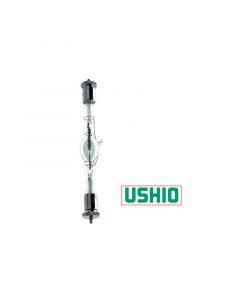Xenon lamps
- Packaging Unit PCESpecial Price $2,585.00 Regular Price $2,937.50
- Packaging Unit PCE$517.40 Bulk price $501.88
- Packaging Unit PCESpecial Price $1,684.80 Regular Price $2,106.00
- Packaging Unit PCESpecial Price $2,993.12 Regular Price $3,741.40
- Packaging Unit PCE$1,301.33 Bulk price $1,262.29
- Packaging Unit PCE$2,537.48 Bulk price $2,461.36
- Packaging Unit PCE$2,127.96 Bulk price $2,064.12
- Packaging Unit PCESpecial Price $2,148.90 Regular Price $2,262.00 Bulk price $2,016.30
- Packaging Unit PCESpecial Price $1,691.95 Regular Price $1,781.00 Bulk price $1,588.60
- Packaging Unit PCESpecial Price $1,654.90 Regular Price $1,742.00
- Packaging Unit PCESpecial Price $886.73 Regular Price $933.40
- Packaging Unit PCESpecial Price $808.93 Regular Price $851.50
- Packaging Unit PCESpecial Price $4,152.62 Regular Price $4,718.89
- Packaging Unit PCESpecial Price $575.90 Regular Price $622.70 Bulk price $519.97
- Packaging Unit PCE$465.40 Bulk price $458.42
- Packaging Unit PCE$478.40 Bulk price $471.22
- Packaging Unit PCE$465.40 Bulk price $458.42
- Packaging Unit PCE$465.40 Bulk price $458.42
- Packaging Unit PCE$725.40 Bulk price $714.52
- Packaging Unit PCESpecial Price $448.50 Regular Price $488.67 Bulk price $432.81
- Packaging Unit PCE$585.00 Bulk price $576.23
- Packaging Unit PCE$488.67 Bulk price $466.70
- Packaging Unit PCE$465.40 Bulk price $458.42
- Packaging Unit PCE$465.40 Bulk price $458.42
- Packaging Unit PCESpecial Price $3,031.42 Regular Price $3,444.79
- Packaging Unit PCESpecial Price $2,024.40 Regular Price $2,300.46
- Components of a xenon lamp
- Functionality
- Purpose of use
- Safety note
- Xenon lamps in fluorescence detector
- Xenon lamp for different FLD models
- Guaranteed lifetime
- Disposal
- Buying spare parts correctly from WICOM
Components of a Xenon lamp
Xenon lamps in most cases consist of a bulb made of quartz, which is capable of withstanding the high pressure inside the lamp. For this purpose, many manufacturers rely on a thick-walled bulb. Due to the high melting temperature of tungsten, it is used as the material for the lamp's electrodes. An arc is created between the cone-shaped cathode and the cylindrical anode after ignition, which also creates plasma. The formation of plasma inside the quartz bulb explains the high temperatures that occur when using the xenon lamp. The acting gas is xenon, which is mixed with a very small amount of mercury.
How it works
When the temperature of the xenon lamp is increased, the pressure inside the lamp also increases. This creates a strong arc between the electrodes of the xenon lamp, which produces a color temperature of 4000 up to 6000 K, depending on the temperature level. The continuous spectrum of xenon lamps allows an imitation of the natural solar spectrum.
Applications
At WICOM you will find xenon lamps that are manufactured exclusively for laboratory use and not for private use. They are therefore suitable as a light source for scientific instruments such as fluorescence detectors, equipment for microscopy and endoscopy, color sampling lamps or color measuring instruments. Due to the light intensity of xenon lamps, they are also often used in car headlights. However, these are lamps manufactured specifically for use in automobiles.
Safety note
The xenon is filled in the lamp so that a certain amount of pressure is created in the bulb. These are high pressures, ranging from 5 to 20 bar. While the lamp is in operation, there is a very strong increase in pressure which, if broken, can cause glass fragments to be thrown. Whether you are working with a cold or a hot xenon lamp, it is highly recommended to wear protective goggles and gloves during direct contact with the lamp. There is a risk of serious injury from small glass fragments. As a general rule, xenon lamps are best replaced by qualified personnel.
Xenon lamps in fluorescence detectors
Because the light output requirements for fluorescence detection are very high, xenon lamps are ideally suited for fluorescence detectors (FLDs). FLDs are commonly used in the field of chromatography to selectively excite fluorescent compounds and examine them. UV/VIS detectors are also commonly used in fluorescence detection, often using deuterium lamps. However, they are not as accurate or sensitive as modern FLDs.
Lamp with Xenon for different FLD models
There are no standard products when it comes to xenon lamps. Depending on the model of your analyzer, the lamps differ in their construction. When buying a xenon lamp, make sure that it fits your instrument model. In the wide range of our online store there are xenon lamps for instruments of different manufacturers - including:
- Agilent
- Hitachi
- Knauer
- Perkin
- Elmer
- Shimadzu
- Thermo
- Varian
- Waters
You are not sure if the selected lamp fits to your FLD? No problem - we are happy to help you with the selection. Contact us either by phone or by mail.
Guaranteed Lifetime
Many xenon lamps have a service life of up to 4000 hours and are therefore considered to be particularly long-lasting lamps. Long-term use of these products is particularly important for laboratory applications. However, if a lamp stops working after less than 1000 hours, this is no cause for concern. Many models from various manufacturers have a guaranteed minimum service life that can be claimed.
Disposal
To prevent injury in the event of an explosion of the old xenon lamp, it is recommended that it be stored in protective packaging until it is finally disposed of. Before disposal, the glass body should be carefully broken - for this purpose, the lamp can be placed in a thick cloth and smashed with a hammer. Make sure that no injuries can take place due to glass splinters.
Buying spare parts correctly at WICOM
For 36 years, we have been providing top service in the field of spare parts for HPLC and GC instruments. From HPLC columns to HPLC valves to disposable syringes - we have a wide range of laboratory supplies ready for you. Our product portfolio also includes other types of lamps: Whether hollow cathode lamps, deuterium lamps or tungsten lamps, our products are both high quality and often, compared to the competition in the laboratory supplies market, low priced. You will receive information about our prices as soon as you have logged into our online store.










